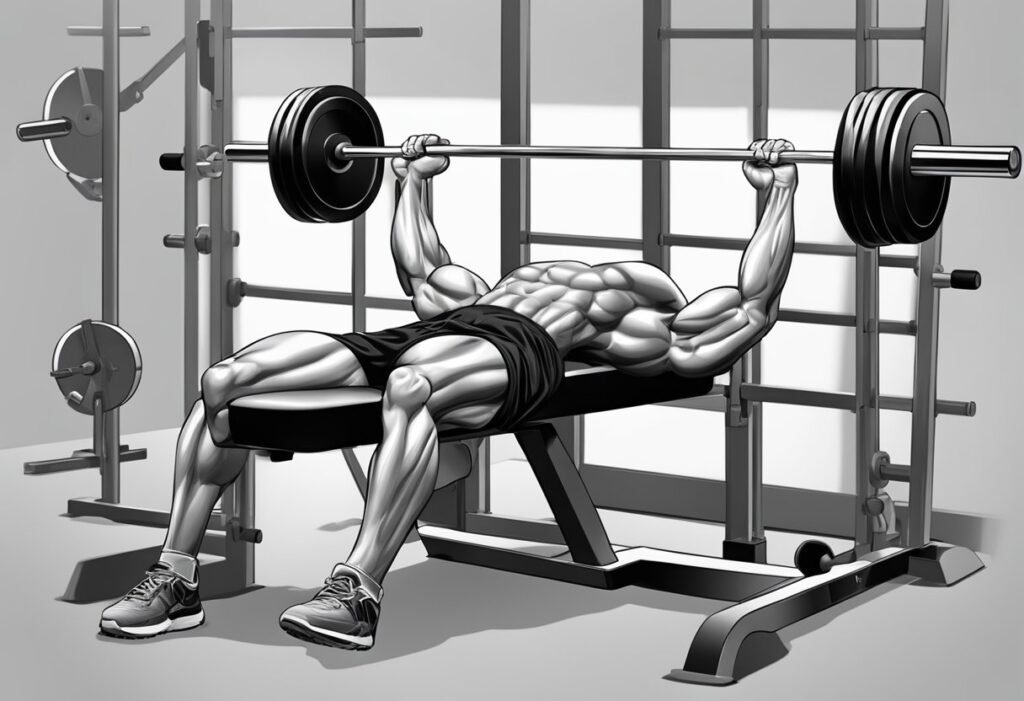
How to Safely Perform a Bench Press: Proper Technique, Common Mistakes, and Injury Prevention Tips for Maximum Strength and Safety
Introduction
The bench press is one of the most effective exercises for building upper body strength, targeting the chest, shoulders, and triceps. However, improper form and technique can lead to serious injuries. This guide will walk you through the proper technique, common mistakes to avoid, and injury prevention strategies to maximize strength safely.
Proper Bench Press Technique
1. Setup & Positioning
A proper setup is crucial for maximizing strength and preventing injuries. Follow these steps:
- Lie Flat on the Bench: Position yourself so that your eyes are directly under the bar.
- Foot Placement: Keep your feet firmly on the ground for stability. Avoid lifting them or placing them on the bench.
- Back Arch: Maintain a natural arch in your lower back. Do not overarch, as it can cause lower back strain.
- Grip Width: Use a grip slightly wider than shoulder-width. Your hands should be positioned so that your forearms remain perpendicular to the floor at the bottom of the lift.
- Grip Type: Wrap your thumbs around the bar (full grip) to prevent slipping and ensure control.
2. Unracking the Bar
- Engage your lats and upper back to create a stable foundation.
- Lift the bar off the rack and bring it over your chest, keeping your arms fully extended.
- Keep your wrists neutral (not bent backward) to reduce stress on the joints.
3. Lowering the Bar
- Inhale and begin lowering the bar in a controlled manner.
- Keep your elbows at a 45-degree angle to your torso to reduce shoulder strain.
- Lower the bar to your mid-chest, ensuring it touches your chest without bouncing.
4. Pressing the Bar Up
- Exhale and push the bar upward, driving through your feet for additional power.
- Maintain control throughout the movement, keeping the bar path straight.
- Fully extend your arms at the top but do not hyperextend your elbows.
Common Bench Press Mistakes to Avoid
1. Flaring Elbows
Many lifters make the mistake of flaring their elbows too wide, increasing the risk of shoulder injuries. Keeping elbows at a 45-degree angle ensures optimal force production and joint safety.
2. Bouncing the Bar Off the Chest
Bouncing the bar off your chest reduces control and can lead to injuries. Always lower the bar under control and lightly touch your chest before pressing it back up.
3. Lifting Feet Off the Ground
Some lifters lift their feet or place them on the bench. This decreases stability and power. Always keep your feet firmly planted for a strong foundation.
4. Overarching the Lower Back
An excessive arch can put stress on the lower back. While some arch is natural and necessary, avoid extreme arching to prevent spinal strain.
5. Not Using a Full Grip
Using a thumbless (“suicide”) grip increases the risk of the bar slipping. Always wrap your thumbs around the bar for a secure grip.
6. Uneven Grip or Bar Path
An improper grip or inconsistent bar path can lead to muscle imbalances and inefficient pressing. Ensure your grip is even and the bar moves in a straight line.
Injury Prevention Tips
1. Warm-Up Properly
A proper warm-up prepares the muscles and joints for heavy lifting. Perform:
- Light cardio (5-10 minutes)
- Dynamic stretching (shoulder mobility drills)
- Warm-up sets with lighter weights
2. Use a Spotter
A spotter provides safety and assistance in case you struggle with the lift. Always have a spotter for heavy sets or new personal records.
3. Strengthen Supporting Muscles
Building strength in the shoulders, triceps, and upper back improves bench press performance and reduces injury risk. Include exercises like:
- Overhead presses
- Tricep dips
- Face pulls
- Rear delt flys
4. Avoid Ego Lifting
Using excessively heavy weights with poor form increases the likelihood of injuries. Prioritize good technique over lifting heavier weights.
5. Listen to Your Body
If you experience pain or discomfort beyond normal muscle fatigue, stop lifting and assess the issue. Ignoring pain can lead to long-term injuries.
Additional Bench Press Variations
For those looking to improve their bench press performance, consider incorporating these variations:
1. Incline Bench Press
Targets the upper chest and shoulders more effectively.
2. Decline Bench Press
Emphasizes the lower chest and reduces shoulder strain.
3. Close-Grip Bench Press
Focuses more on triceps strength.
4. Dumbbell Bench Press
Enhances stability and muscle engagement due to the independent movement of each arm.
5. Floor Press
A partial-range bench press variation that focuses on lockout strength.
Conclusion
The bench press is a powerful exercise when performed correctly. By focusing on proper technique, avoiding common mistakes, and implementing injury prevention strategies, you can build strength safely and effectively. Prioritize form over ego, and always listen to your body to ensure longevity in your training. Happy lifting!
